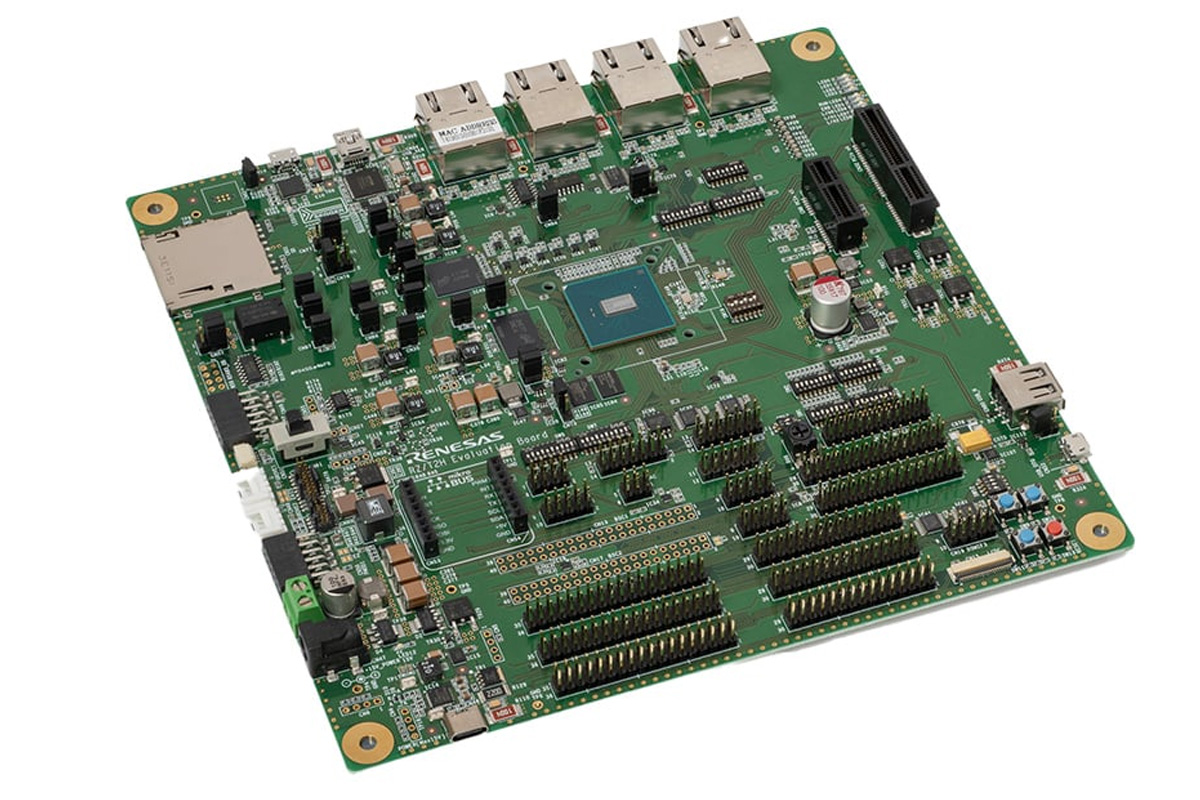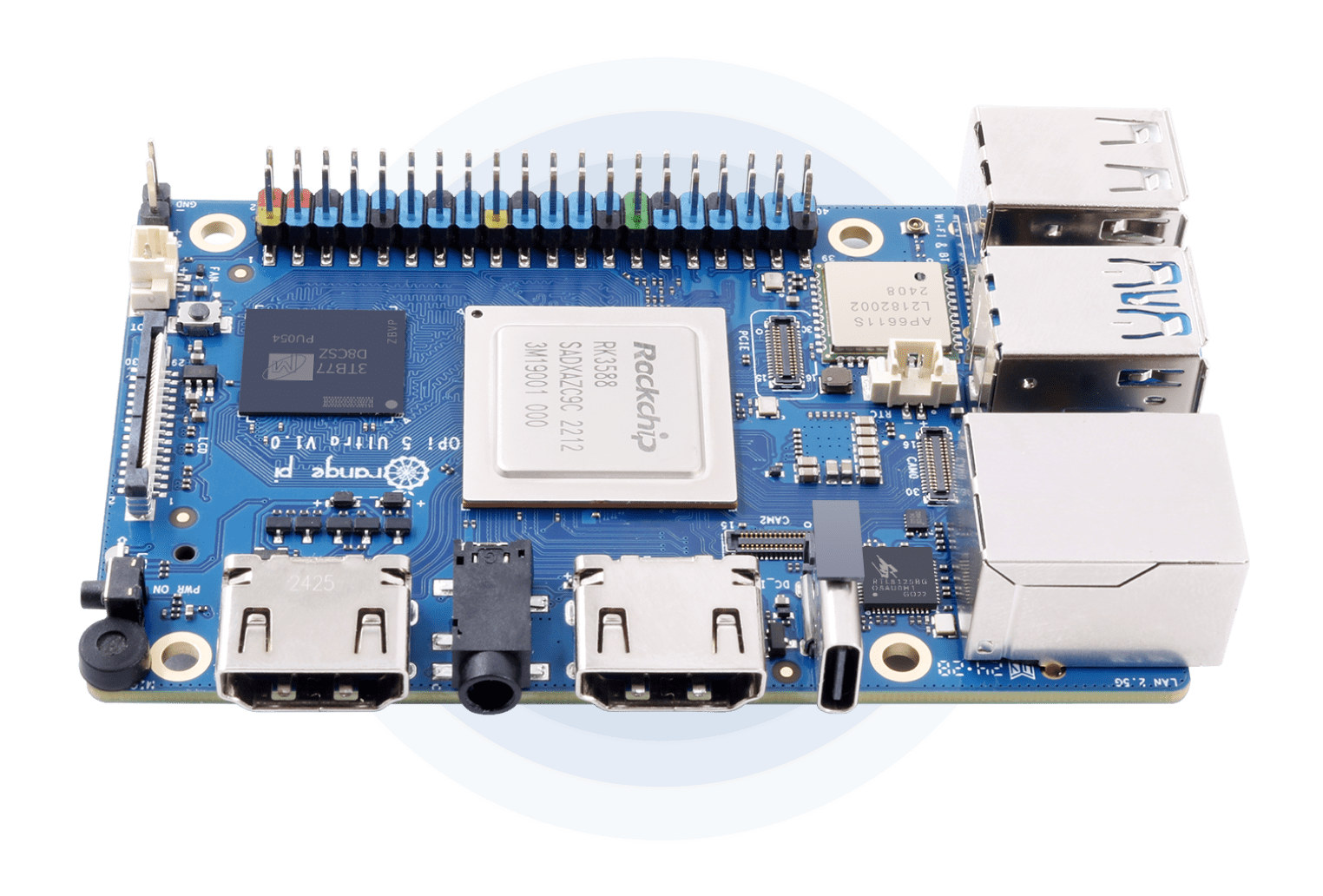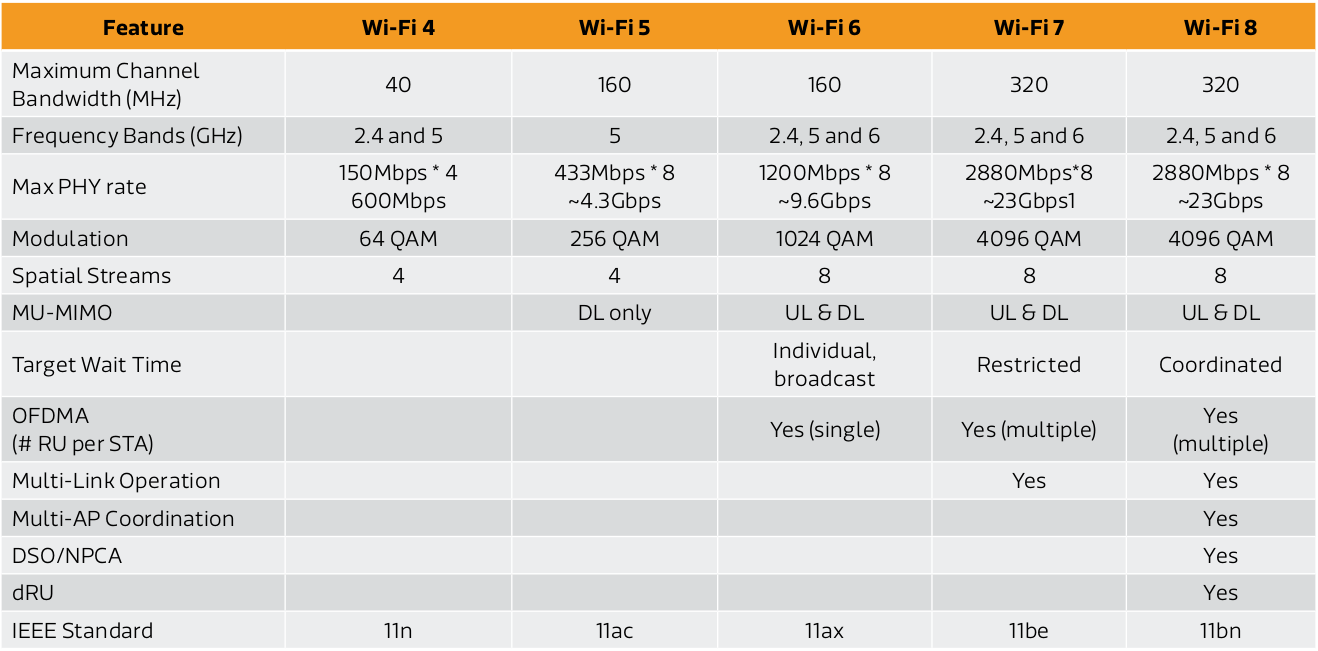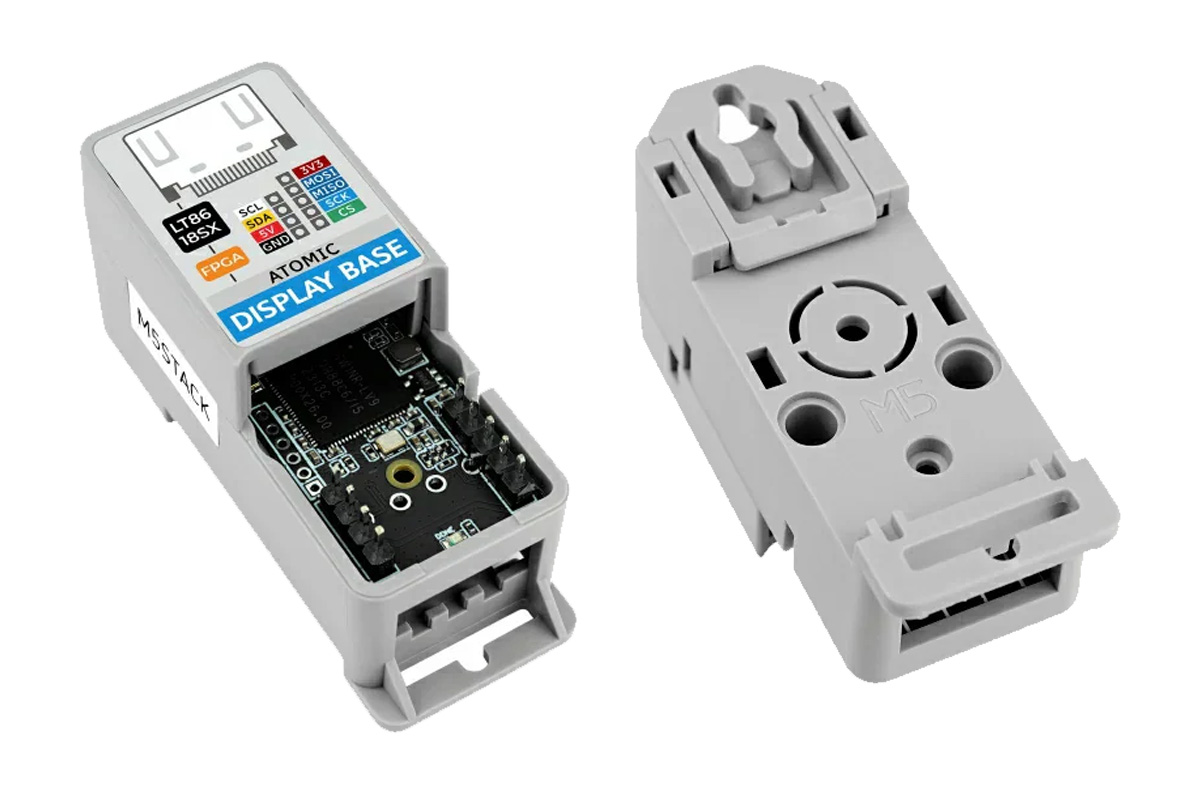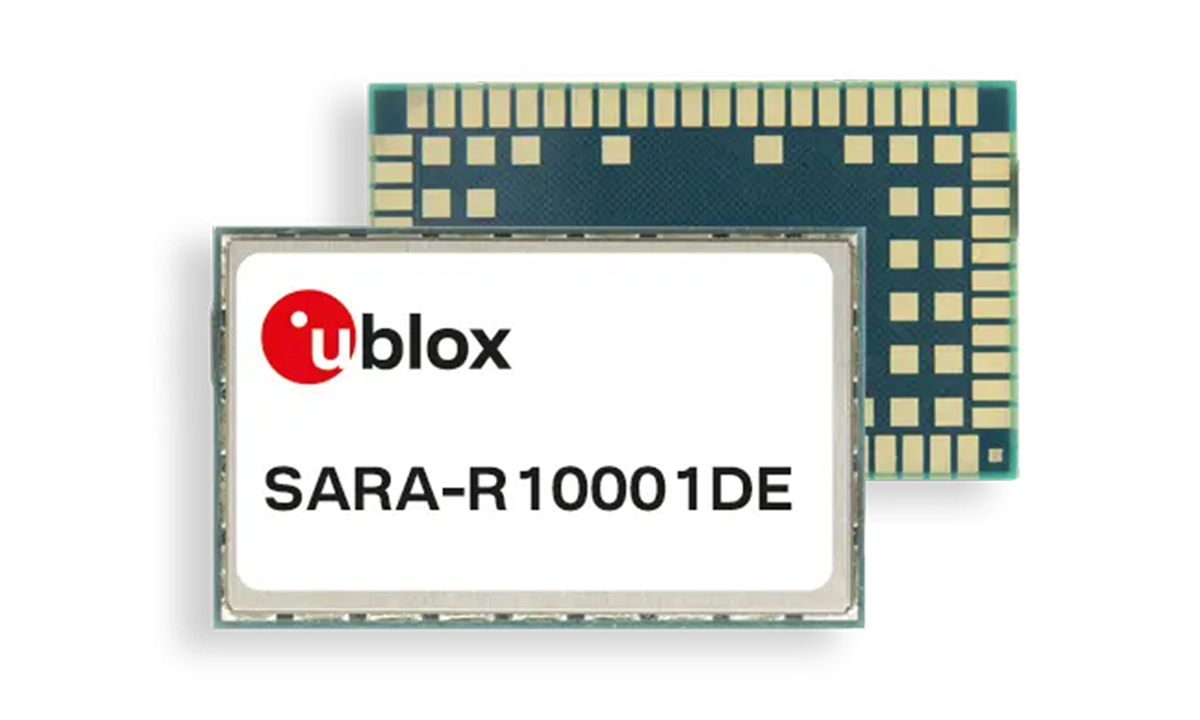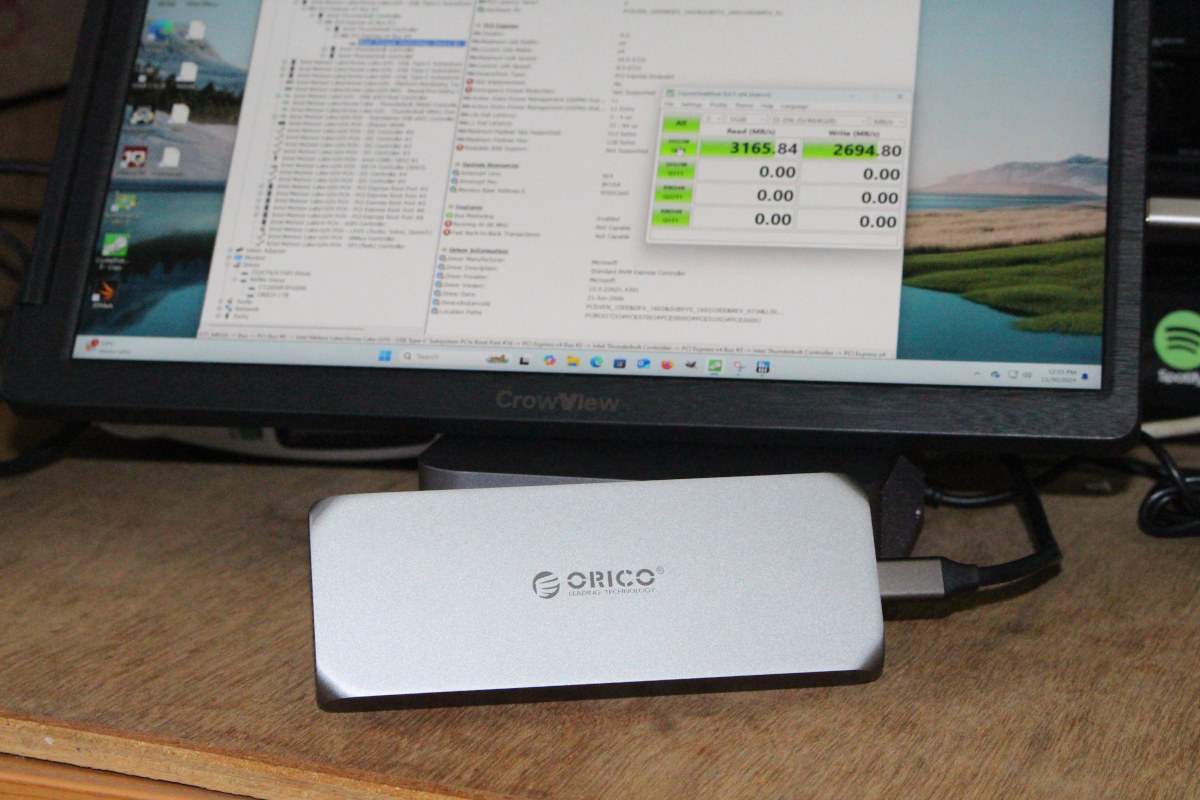Silicon Labs SiWG917Y and SiWN917Y are pre-certified, ultra-low power 2.4 GHz WiFi 6 and Bluetooth Low Energy (LE) 5.4 modules made as an extension of the Wireless Gecko Series 2 Arm Cortex-M33 microcontroller family and designed for IoT applications such as Smart Home devices, building automation solutions, healthcare devices, industrial sensors, and asset trackers. The SiWG917Y module is used as a standalone solution where all application code runs on an Arm Cortex-M4 core, and the SiWN917Y module is designed as a Network Co-processor so customers can execute their application on a separate MCU while the wireless module manages WiFi 6 and BLE 5.4. Silicon Labs SiWx917Y modules specifications: Microcontroller MCU Arm Cortex-M4F application core up to 180 MHz (225 DMIPS performance) Arm Cortex-M4 network wireless processor running up to 160 MHz, Accelerators – Integrated FPU, MPU, NVIC, Matrix vector processor (MVP) Memory 672 KB embedded SRAM shared by Cortex-M4 and […]
CapibaraZero firmware enables low-cost Flipper Zero alternatives based on ESP32-S3 hardware
CapibaraZero open-source firmware aims to offer a low-cost alternative to Flipper Zero for ESP32-S3-based hardware platforms and soon other gizmos with ESP32 wireless microcontrollers, notably the LilyGO T-Embed CC1101, similar to the original T-Embed with ESP32-S3 WiSoC, but also featuring a Texas Instruments CC1101 Sub-GHz microcontroller and an NXP PN532 NFC/RFID module. The Flipper Zero is a popular portable multi-tool for pentesters and hardware hackers based on STMicro STM32WB55 Bluetooth 5 LE & 802.15.4 wireless microcontroller and a TI CC1101 Sub-Ghz MCU that got involved in controversies such as a ban proposal in Canada last year due to its (dubious) potential use for car theft. Since then we’ve seen several alternatives such as Monstatek M1 (that’s yet to be delivered to backers…) and HackBat open-source hardware with Raspberry Pi RP2040, ESP8266 WiFi module, and the CC1101 RF transceiver. The CapibaraZero firmware offers another way to create your own cheap Flipper […]
Renesas RZ/T2H Cortex-A55/R52 industrial MPU and Dev Board support EtherCAT, PROFINET, and TSN
Renesas RZ/T2H industrial MPU is the most powerful member of its RZ/T2 series of real-time microprocessors. The MPU features four Arm Cortex-A55 CPUs for application tasks and two Cortex-R52 CPUs for real-time control. It supports 9-axis motor control with 3-phase PWM timers, delta-sigma interfaces, and encoder interfaces. It also supports Industrial Ethernet protocols like EtherCAT, PROFINET, and TSN. These features make it ideal for industrial applications such as industrial robots, PLCs, motion controllers, and CNC machines. Renesas launched the RZ/T2L single-core Arm Cortex-R52 MPU just last year, and before that, in 2022, they launched the RZ/T2M dual Arm Cortex-R52 MPU. The RZ/T2L was just a cost-down version of RZ/T2M with an EtherCAT controller, compared to those old controllers the latest RZ/T2H supports 9-axis motor control and compatibility with various industrial Ethernet protocols. Renesas RZ/T2H specifications: CPU 4x Arm Cortex-A55 (64-bit) clocked at up to 1.2GHz with 32KB L1 I/D cache, 1MB L3 cache 2x […]
Orange Pi 5 Ultra SBC offers HDMI 2.1 output and HDMI 2.0 input
The Orange Pi 5 Ultra is a Rockchip RK3588 SBC that’s slightly larger than a business card and visually identical to the Orange Pi 5 Max introduced last August, but replacing one of the two HDMI 2.1 video outputs on the latter with an HDMI 2.0 input port. The new single board computer is still offered with up to 16GB LPDDR5, an eMMC flash module connector or soldered-on eMMC flash, an M.2 socket for an NVMe SSD, 2.5GbE and WiFi 6E networking, and four USB 3.0/2.0 ports. Orange Pi 5 Ultra specifications: SoC – Rockchip RK3588 CPU – Octa-core processor with 4x Cortex-A76 cores @ up to 2.4 GHz, 4x Cortex-A55 cores @ up to 1.8 GHz Arm Mali-G610 MP4 GPU with support for OpenGL ES1.1/2.0/3.2, OpenCL 2.2, and Vulkan 1.2 6 TOPS AI accelerator with support for INT4/INT8/INT16/FP16 mixed operation VPU – 8Kp60 H.265/VP9/AVS2 10-bit decoder, 8Kp30 H.264 decoder, […]
Wi-Fi 8 (802.11bn) to focus on reliability and efficiency while maintaining Wi-Fi 7 performance
Wi-Fi 7 (802.11be) routers and modules have only been launched recently, but engineers are already working on Wi-Fi 8 (802.11bn) “Ultra High Reliability (UHR)”, and MediaTek shared some details in a whitepaper detailing some of the improvements of the new standard for its upcoming Filogic Wi-Fi 8 SoCs. Surprisingly, there aren’t any enhancements to the maximum performance with Wi-Fi 8 still offering up to 320 MHz channel bandwidth, 23 Gbps maximum PHY rate, and support for 2.4 GHz, 5GHz, and 6GHz frequency bands, as well as up to 8 spatial streams. The Wi-Fi 8 improvements are all meant to improve Wi-Fi reliability, network efficiency, and power consumption in IoT use cases, which will end up improving the overall WLAN performance when many nodes are connected. Wi-Fi 8 new features: Coordinated Target Wait Time (TWT) allows low-power IoT devices to negotiate specific times for transmission with access points in order to […]
$20 ATOMIC Display Base is a low-cost HDMI display driver for M5Stack’s ESP32-based Atom IoT controllers
M5Stack has recently launched the M5Stack ATOMIC Display Base, an HDMI display driver designed to emulate traditional SPI TFT-LCD data output using Gowin GW1NR-9C FPGA and a built-in LT8618SX RGB-to-HDMI chip and designed to work with the company’s Atom IoT controller family based on ESP32 wireless microcontrollers. The module supports up to 720p (1280×720) image output with a 24-bit color depth and has an average frame rate of 12–16 FPS. Additionally, it can be paired with ATOM series hosts for various memory and application needs. These features make this compact device suitable for industrial control displays, smart home information screens, educational and conference presentations, and remote monitoring displays. The only downside of this device is that it requires a display with adaptive resolution scaling to avoid compatibility issues. M5Stack ATOMIC Display Base (HDMI display driver) specifications FPGA – Gowin GW1NR-9C (PDF datasheet) FPGA with 8,640 LUTs used to simulate SPI TFT-LCD data […]
u-blox SARA-R10001DE LTE Cat 1bis Module integrates an eSIM with Multi-IMSI and eUICC support
u-blox has introduced the SARA-R10001DE, an LTE Cat 1bis module with integrated eSIM featuring multi-IMSI technology and eUICC functionality. The module is pre-provisioned with Wireless Logic’s Conexa IoT Network SIM profiles for global IoT deployments. The eSIM supports OTA using Remote SIM Provisioning, allowing the module to switch between multiple stored SIM profiles to connect to the best available network. Multi-IMSI technology allows eSIMs to store multiple International Mobile Subscriber Identity (IMSI) profiles, enabling dynamic network switching for uninterrupted connectivity. eUICC functionality, based on the GSMA standard, facilitates OTA updates and profile management, simplifying operator switching and ensuring global compliance. Although SARA-R10001DE is u-blox’s first LTE Cat 1bis module with an embedded SIM (eSIM), we previously covered the u-blox LEXI-R10 LTE Cat 1bis module and associated evaluation kit, as well as Cavli C17QS Cat 1bis module built around the Qualcomm QCX217 microcontroller. u-blox SARA-R10001DE module specifications: LTE module – SARA-R10001DE […]
ORICO COM2-T3 review – A 40Gbps SSD enclosure tested with a 7000MB/s M.2 NVMe SSD
ORICO sent me a COM2-T3 SSD enclosure capable of 40 Gbps speeds for review along with the company’s 1TB O7000 NVMe SSD rated at up to 7000MB/s read speed which converts to about 56 Gbps and should be plenty enough to test 40 Gbps SSD enclosure. Thunderbolt 4 and USB4 are not always equivalent But before going into the review itself, here’s some background information. When I test the USB-A and USB-C ports in mini PC reviews, I rely on an ORICO M234C3-U4 NVMe SSD enclosure with an Apacer SSD. That enclosure was falsely advertised as a “USB4″ enclosure but still works at 40Gbps with an Intel JH7440 Thunderbolt 3 chip that works with 40 Gbps USB Type-C ports and a JMS583 “USB 3.1 Gen 2 to PCIe NVMe Gen3” bridge for USB 3.0 ports up to 10 Gbps. I always assumed a 40Gbps USB-C peripheral would always work with […]



